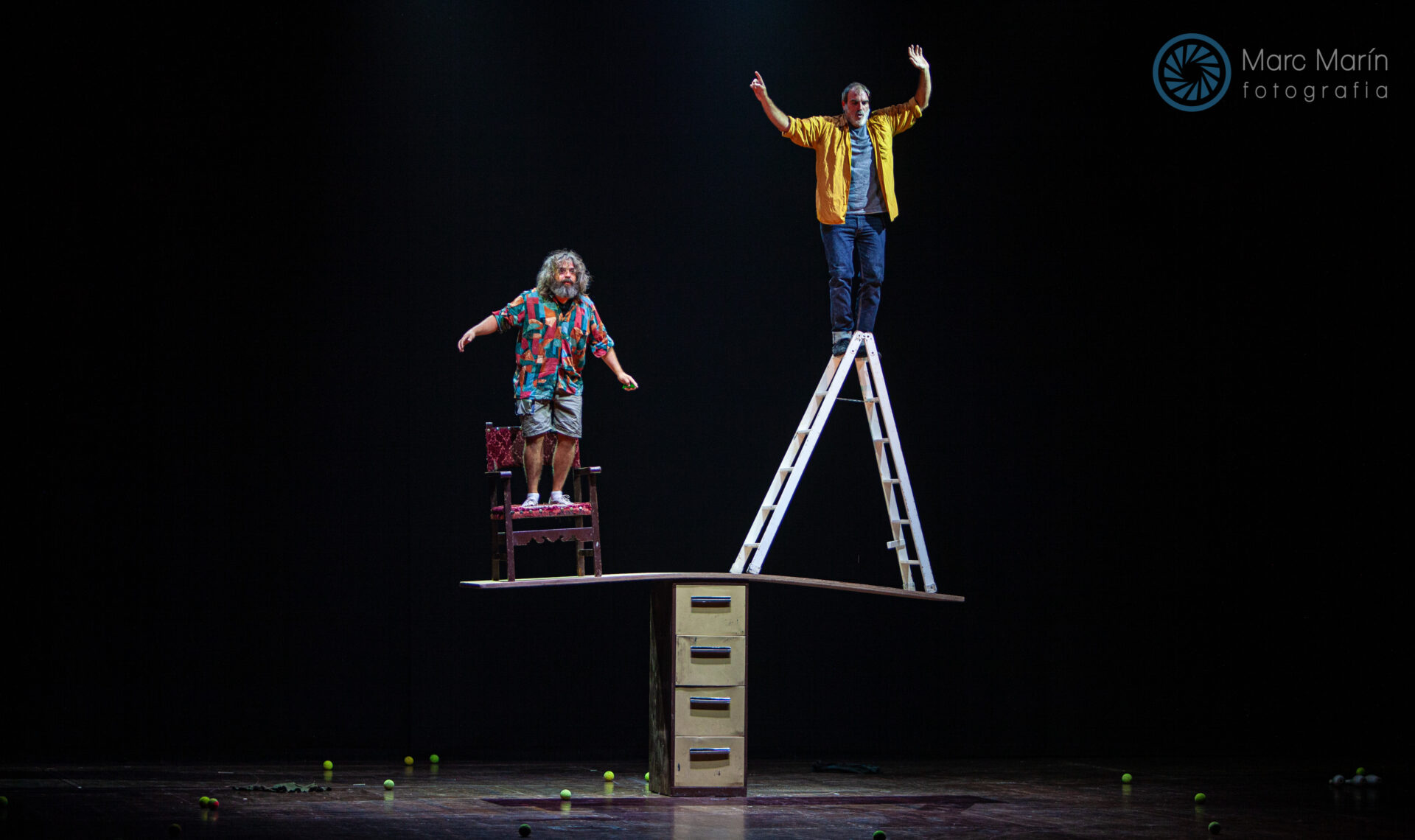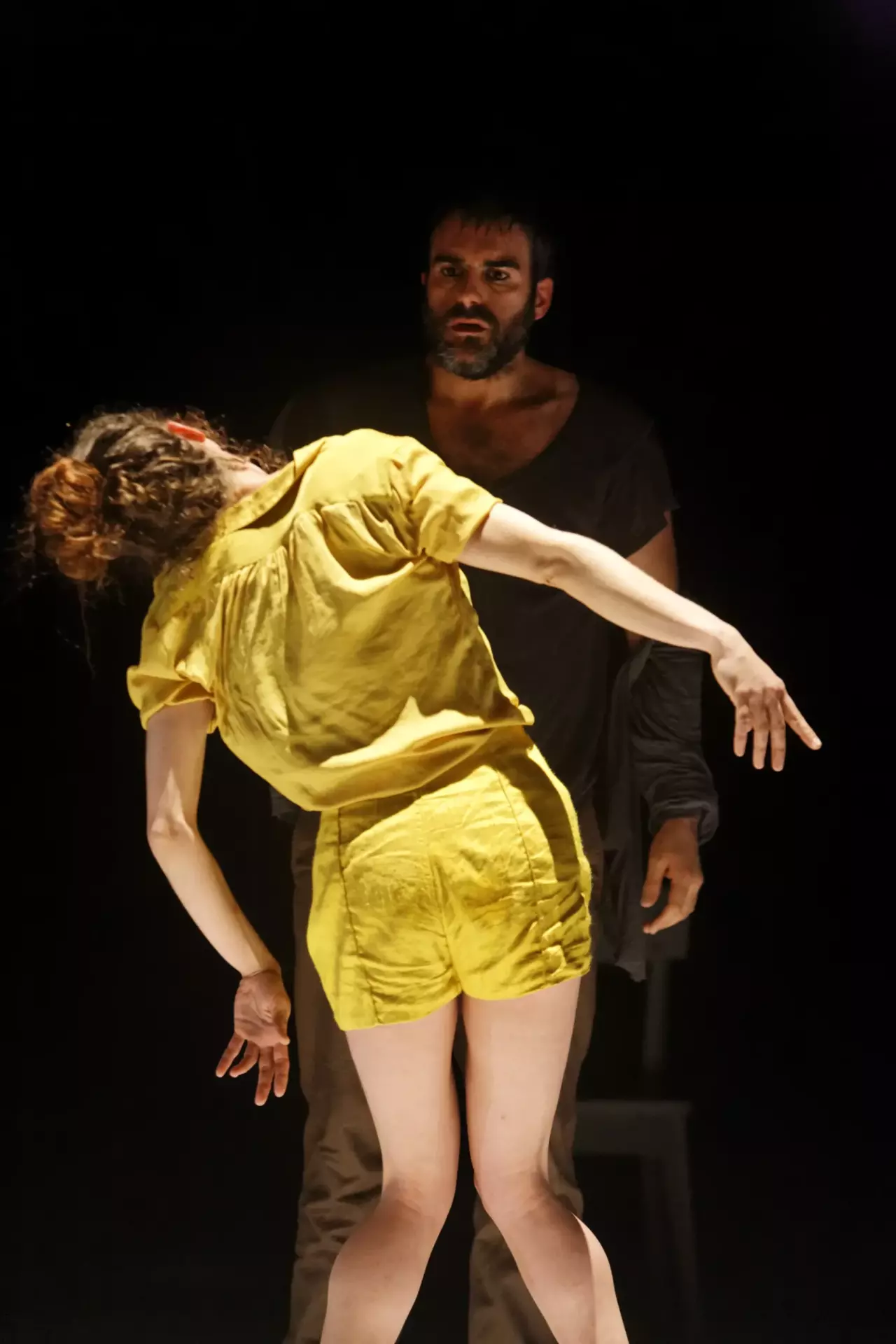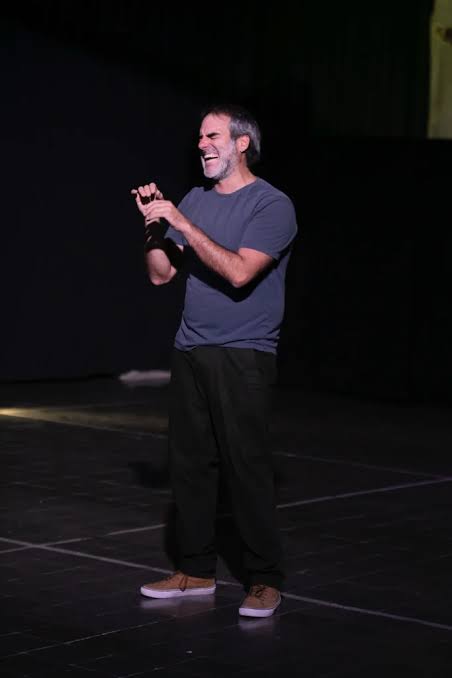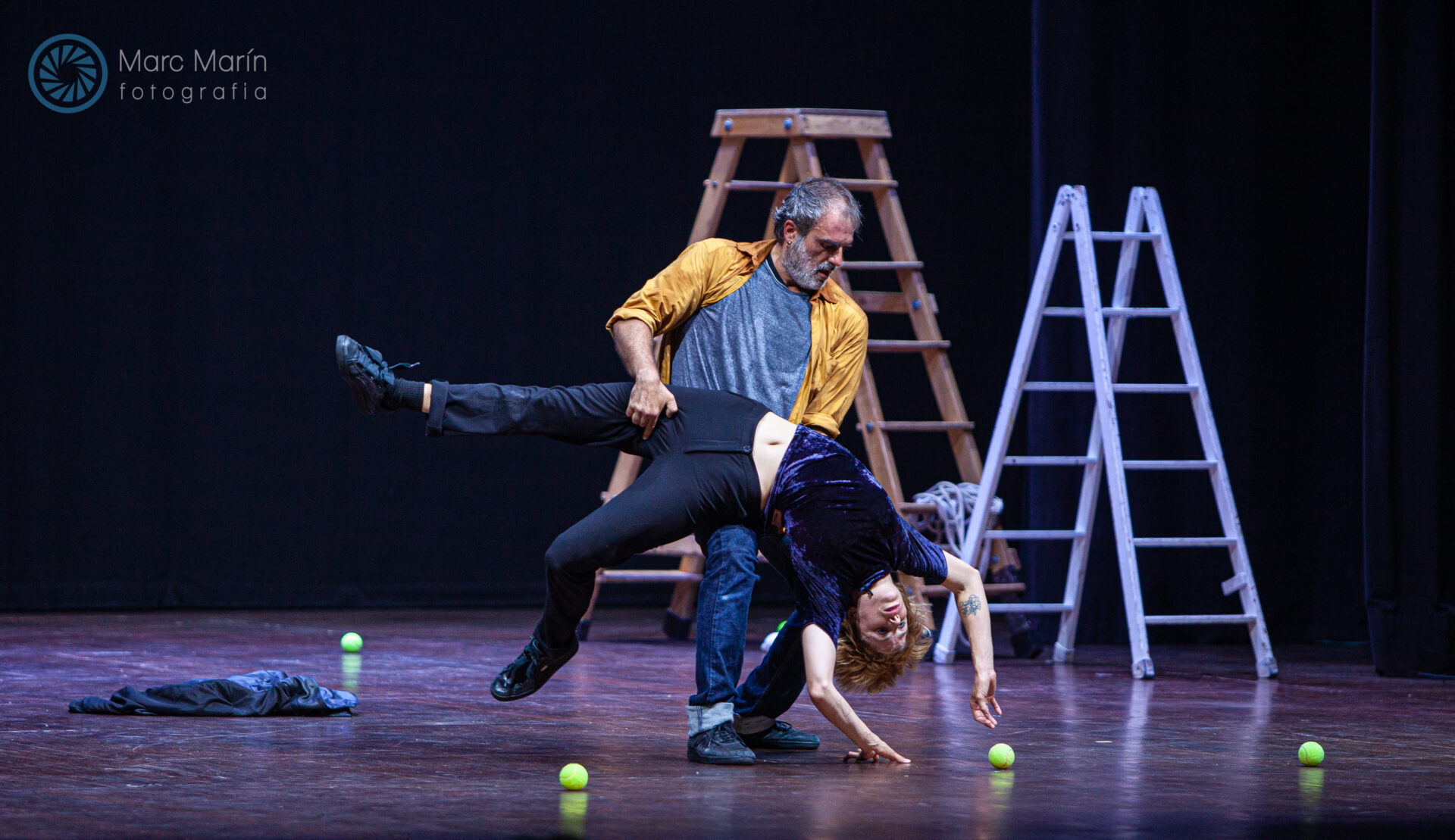Fragility is beautiful—it’s part of being human
22.04.2025.
Interview with Pau Portabella, who is leading a circus dramaturgy masterclass for professionals this spring, and whose performance “Languages” will be shown at Rīgas cirks in just a few days.
We spoke about the differences between circus and theatre, what to expect from the show, and how the performance creation process in the circus unfolds.
The Path to the Circus
Una:
How did you decide that the circus would be your way of creating and talking creatively with the world?
Pau:
Good question. Sometimes I ask myself the same—whether I made the decision, or if life just put me in the right situations. Of course, we make decisions, and we have some awareness, but I like to believe that I chose this path.
I started with theatre. One of the first reasons was that I had a hard time understanding traditional schooling and the way of life they try to teach you as a child. I wasn’t a good student—not because I couldn’t be, but because I wasn’t interested. I felt from a very young age that I was different—not better or worse, just different.
When I was lost and unsure what to do in life, I had two close friends—one in dance and one in theatre. Something about what they were doing attracted me. I didn’t fully understand it, but I felt drawn.
I looked into theatre and dance schools in Barcelona, and when I visited one, I loved the atmosphere. I signed up for the basics, and the next year I went straight into actor training. It felt like I had found people who were closer to my way of being.
There was a feeling of freedom—doing things that made me happy and laugh. I didn’t question it. I just started, and I loved it.
Later, the circus came naturally. As a child, I was always into sports, climbing trees, jumping everywhere, teaching myself acrobatics on the beach. The body was already a central part of me—I just didn’t know that it was a “circus.”
As for dramaturgy and directing—I think it came from having a creative mind that I wasn’t fully aware of. Creating gives my life meaning. So yes, maybe I didn’t realize it back then, but there were always reasons.
What is circus?
Una:
I always thought theatre, dance, and performance were part of the circus. But what does circus have that the others don’t?
Pau:
I think it comes down to two aspects: community and dramaturgy.
Circus comes from a tradition of families traveling together in tents. That creates a strong sense of belonging. Even today, in places like Catalonia, people train together, share, collaborate—even if they’re working on different projects. The circus community is incredibly welcoming.
On the dramaturgical side, the circus is evolving. It started with a clear distinction—“we’re doing circus” and “we’re doing theatre.” But as time passed, and through my experience studying and working in France, I started to see that the circus has its own way of speaking, a unique dramaturgy.
I’m still learning it, but I think it’s rooted in technique—how the circus body and movement communicate on stage. And often, in earlier shows, theatre and circus wouldn’t align; the theatrical message was strong, but the technique would pull in another direction. We’re now learning to make the technique part of the storytelling.
Una:
That sounds like you’ve discovered something new—because usually, the circus focuses on physical features, and the story is told through words.
Pau:
Exactly. That’s why the show is called Languages. I’m fascinated by the different channels we have to communicate—not just with words. We often forget that we’re sharing emotions and stories with gestures, silences, rhythms, tones, facial expressions, body language… everything. And at the same time, it can feel like nothing. It’s what you feel, what you think, what happens inside you.

What is the language of circus?
Una:
If circus is a language, how would you describe its grammar or syntax?
Pau:
When I teach or create, I often talk about textures—ways of moving that go beyond physical technique. A texture carries energy or emotion. I also speak about dynamics—how rhythms and qualities of movement express something more than just the skill.
A soft, slow acrobatics routine feels completely different from one performed with wild energy. When I build a routine, I think about it like composing a musical score. The movements are notes. They need to work together in rhythm, plasticity, and emotion.
Una:
How does circus help you explore the body and non-verbal communication?
Pau:
Circus performers often have a hard time speaking on stage because their physical language is so developed. But I believe those two shouldn’t be separate.
Once you realize you’re already communicating through your body and technique, you can use words to complement it. That’s what we do in life too—I’m moving my hands as I speak to you right now. That adds emotion and clarity to my words.
Circus is a tool to provoke and transmit, and when you mix it with light, sound, words, and theatrical elements, it becomes a full experience. In the end, the audience creates their own meaning from what you give them.
Una:
I’ve noticed circus people are very different from other artists. Do you agree?
Pau:
Yes, definitely. If not, I would’ve stayed in the theatre.
Circus people have a need to explore danger—not necessarily physical danger, but emotional and creative risks. I love how we use danger not just in technique, but also in our dramaturgies.
Circus artists are strong and fragile at the same time. They look inside themselves and share their vulnerability with the audience. Fragility can be beautiful—it’s part of being human. Living fully means accepting that.
Una:
I think circus people embrace their weirdness more. In other fields, you’re supposed to fit in. But in the circus, you show exactly who you are.
Pau:
Absolutely. Circus has roots in nomadic communities, often on the edges of society. Even now, there’s more freedom—more space to just be who you are, and to share that openly.
Una:
How do you approach the emotional or poetic potential of the body and risk in performance?
Pau:
Great question. In one part of our show, two characters stand on a balanced structure. It becomes a metaphor for their relationship—if one moves, the other’s world shifts. That’s how circus can speak, through metaphor.
Yes, we use risk to provoke feelings. But we don’t always know how the audience will respond. It’s an ongoing research. Sometimes, I fall in the show. People worry I’m hurt, or they feel my character’s despair. These moments are expressive—not just spectacle.

Una:
Languages is part of your “Evolutions” trilogy. What themes are you exploring?
Pau:
It’s a journey from the self toward society. It begins inside—the personal universe of a person—and moves toward relationships, collectives, and finally society.
It also speaks about being lost. When your reality changes, it can feel overwhelming. But if you accept that change, you can find freedom in it. The show itself evolves—we created it with the idea that future performances will include improvisation and be different every time.
Una:
You talk about getting lost a lot. Do you have a method for navigating chaos?
Pau:
No method, but I have tools—and experiences.
I remember a time when everything seemed perfect—my company was thriving, I was respected, things were good. But I felt deeply lost inside. I isolated myself, stayed in my caravan for weeks. I felt darkness, like a shadow.
One day, I realized I had to accept it. We easily accept joy, but we reject sadness. That day, I chose to live the sadness, and something shifted. The darkness became a kind of peaceful melancholy. Accepting all emotions makes life richer.
Una:
How personal is Languages?
Pau:
It’s very personal—for me and for the whole team. I asked everyone to bring their own stories and creativity. I think all art speaks about the artist, even if they don’t realize it.
I was inspired by Fight Club, Mr. Robot, books about time and reality, and especially The Man Who Mistook His Wife for a Hat by Oliver Sacks. These explore different ways of perceiving reality. And of course, my team inspired me daily.
Una:
It feels like collaboration is especially important in a circus.
Pau:
Yes. In the circus, we’re all creators. In theatre or film, there’s often a hierarchy. In the circus, I work with the team. I don’t want to direct from a distance. I want to live the process together.
My current project was supposed to be a solo. After one workshop, I knew I wanted to create with people. That’s what I love most—sharing and understanding others.
Una:
How important is communication in your work and in today’s world?
Pau:
It’s essential. We are social beings. Languages is very much about communication and how it shapes our reality.
Social media has made communication more frequent but less sincere. We wear more masks. Honesty is becoming rare. But it’s vital.
In life, when you speak openly—even about difficult things—everything gets better. Art is one way to reach that honesty.

Una:
But the circus is still a show. Is honesty possible when you’re performing fiction?
Pau:
That’s the paradox I love. My work is based on honesty, but I’m also lying to provoke reactions.
A performance is fiction, yes—but how we live it can be completely real. I like to use real emotions on stage. The character becomes a mix of myself, the audience’s projections, and the fiction we’ve built.
Una:
What role do objects play in Languages?
Pau:
They carry metaphors. A balancing structure represents human relationships. Objects move and create chaos—a metaphor for a world falling apart. Juggling becomes a personal moment. We even play with the idea of magic to disrupt reality.
The scenography evolves too. It helps these different universes converge into a shared, collective reality.
Una:
Is body language universal?
Pau:
More universal than spoken language, but still influenced by culture. For example, head gestures mean different things in different countries. But posture, gestures, and energy also come from personality and social context.
So yes, body language is both universal and culturally shaped.
Una:
What kind of relationship do you want to build with the audience in Languages?
Pau:
I want to open a window into who we are on stage. I want them to connect—to ask themselves questions about their own lives and feelings. More than just watching, I want us to share an experience together.
Welcome to opening of the window! Tickets


